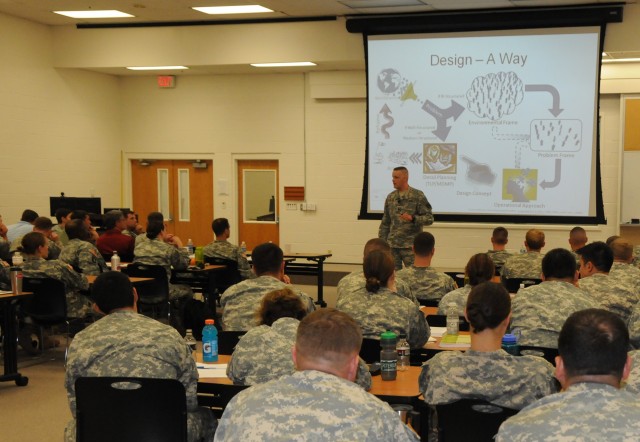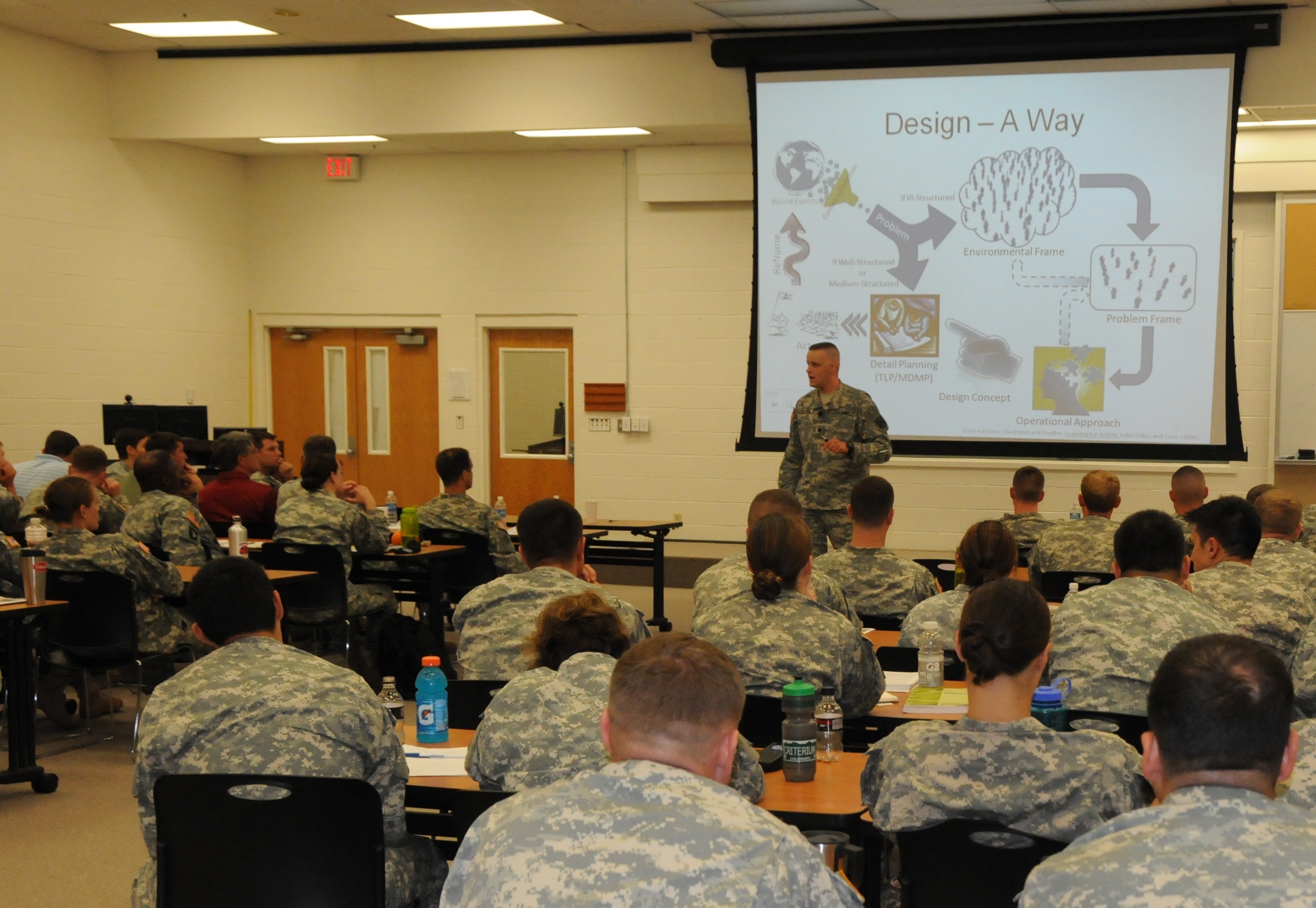FORT RUCKER, Ala. -- Aviation Captains Career Course students learned the Army Field Manual 5.0's new facets from some of the book's authors during a special training session April 7 at Adams Hall.
Three Combined Arms Center at Fort Leavenworth, Kan., members visited the A Company, 1st Battalion, 145th Aviation Regiment Soldiers in order to present the manual's newest changes. The book's new version was printed March 26, according to Mike Flynn, a Combined Arms Doctrine Directorate military analyst and doctrine authority.
Flynn said the "keystone" manual is updated every three to five years. The last update came in 2005.
The captains learned about major changes to the operations manual through the team's half-day presentation. Flynn said the old version focused solely on mission planning, but the new one includes steps on mission planning, preparation, execution, and assessment steps and policies.
"Planning is great and essential, but you've got to execute," he said. "If you put it all in one manual, it shows a better relationship."
Lt. Col. Jay Nelson, a U.S. Army Command and General Staff College deputy commandant initiatives group member, said the new manual switches the focus from product-oriented to process-oriented thinking. The manual is written in a "non-prescriptive" formula to allow flexibility in addressing mission planning and execution, he noted.
AVC3 students said the new processes permit more creativity and discussion in problem-solving situations.
"We're getting out of a linear mindset and getting into brainstorming," said Capt. Pedro Rivera.
Capt. Ben Summers noted the new approach encourages older leaders, such as majors and lieutenant colonels, to involve junior officers.
"There is an added value to junior leaders in formulating and debriefing the process," he said.
Maj. John Fernandez, an AVC3 small group leader, said he invited the team to Fort Rucker to give captains the opportunity to learn the most they can about the new manual. He said small group leaders normally teach classes like these, but bringing in the book's authors produces more fruitful discussions and understanding.
"It's all about bringing in the most current and relevant information," he said.
Combined Arms Center staff created the team to help disseminate changes to units more quickly, Flynn said.
Fernandez said the visit here was the first for the team to any Army Captains Career Course.
Both students and team members found value in training the captains, who will become brigade and battalion operations officers or company commanders in their next assignments.
"These guys will be implementing the changes. A lot of guys will leave here and deploy," Nelson said. "They'll be the ones (who) tell us if it's good doctrine or not."
Fernandez said some changes will be implemented in the current classes, something Summers likes to see, especially since the manual permits more discussion in mission planning and execution.
"All the problems we (encounter) here are well-structured. It's not like that in real life. It's refreshing," he said.


Social Sharing